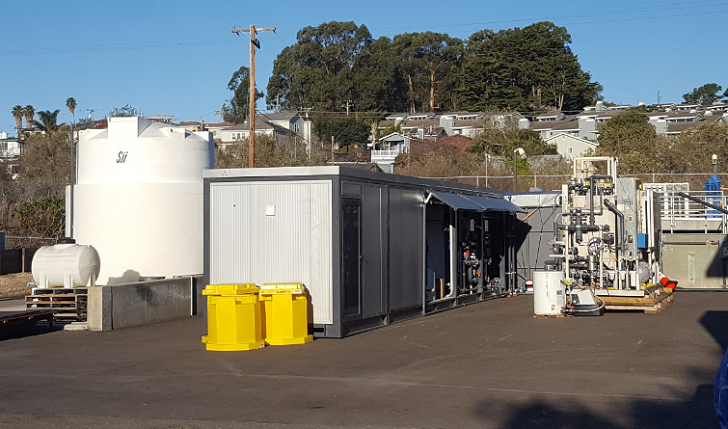

The Pulse Flow Reverse Osmosis (PFRO) is a new way to operate RO, chloramine-free. It allows us to achieve high recovery and very high flux, all in a single stage, thus offering significant CAPEX and OPEX advantages.
Water scarcity around the world increases the attractiveness of reusing reclaimed effluent, both in the municipal and industrial sectors.Traditional water reuse processes typically include reverse osmosis (RO) that operate at a recovery of 80-85%, using 2-3 stages in order to keep the required minimal cross-flow velocity.
This creates an inherent head loss which is the result of the feed water that flows through the system and leaves as brine. This is basically a ‘parasitic’ flow that doesn't contribute to the permeate production; it only serves the hydraulic purpose of maintaining adequate cross-flow velocity. This loss grows as fouling builds up on the membrane surface and spacers.
In addition, chloramine is normally dosed in order to control biofouling formation on the membranes. This results in the formation of disinfection by products, such as N-Nitrosodimethylamine (NDMA), Haloacetic acids and Trihalomethanes. NDMA is an organic contaminant suspected as carcinogenic.
Dead-end mode Contrary to the typical RO, in PFRO the water flows in an intermittent regime – about 95% of the time it is in dead-end mode (all the feed water flows through the membrane and the brine valve is closed), and during the rest of the time, the brine valve is open and the brine flow flushes at high velocity, thus creating high-shear forces.
In this approach it is no longer required to maintain constant brine flow (since the periodical flushing events provide enough shear force), therefore the common staged design is no longer required. All the pressure vessels are installed in parallel and there are no inter-stage booster pumps or piping.
Moreover, the constantly changing hydraulic conditions in the system makes it hard for microorganisms to adopt, thereby reducing the risk of biofouling formation as well as the risk of scaling. This allows the system to operate at very high flux (50% higher than normal), which results in overall CAPEX savings of about 20%, without the risk of rapid increase in bio fouling.
There are also OPEX advantages since chloramine dosage is avoided and the UVT value of the permeate water is very high, which makes the last part of the process, UV/AOP very efficient (savings of up to 35-40% on energy).
Successfully demonstrated PFRO was tested and proved in a demonstration facility in the City of Pismo Beach, CA. At the Central Coast Blue Advanced Water Purification Demo Facility, PFRO has been successfully demonstrated earlier this year. The demo facility operates at a recovery of 85% and flux of 16.5 gfd stably, without any dosage of chloramine.
The facility has a capacity of 58,000 gallons of water per day and using PFRO, IDE Technologies has been able to optimize performance while minimizing costs. With this sustainable solution, the plant will help alleviate water concerns in the Five Cities communities of Central Coast Blue including the cities of Pismo Beach, Arroyo Grande, Grover Beach, Oceano as well as the South San Luis Obispo County Sanitation District (SSLOCSD).
IDE Technologies will continue successfully testing PFRO which offers a new way to achieve higher recovery, lower CAPEX and OPEX, and is an overall simpler process that is more environmentally-friendly and sustainable for communities across the world.




